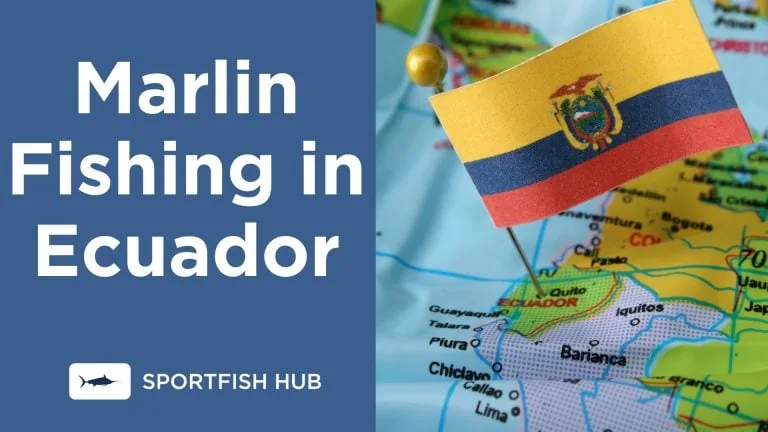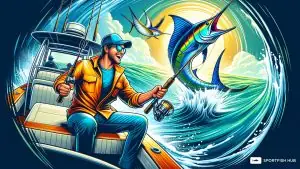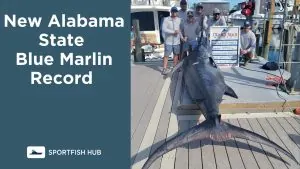Ecuador and the Galapagos Islands are two of the best destinations for catching trophy-sized marlin. Its nutrient-rich Pacific waters attract several highly sought-after billfish species, especially blue, black, and striped marlin. This comprehensive guide covers everything you need to know to plan a successful marlin fishing trip to Ecuador.
Table of Contents
When is the Best Time to Go Marlin Fishing in Ecuador?
| Location | Marlin Species | Peak Season |
|---|---|---|
| Ecuador (mainland) | Blue, Striped | May – November |
| Ecuador (mainland) | Black | December – April |
| Ecuador (Galapagos) | Blue, Black, Striped | December – April |
Top Marlin Fishing Destinations
- A major port city with a vibrant charter fleet and numerous hotels and restaurants.
- Options range from budget lanchas to luxury sportfishers.
- Charter prices typically are $900-$1,500 per day.
- High-end lodges like Salinas Beach Resort ideal base.
- Smaller port known for its world-class sailfish and marlin fishing.
- Fewer crowds and lower costs than Salinas.
- Charters $700-$1,200 per day.
- The Point Hotel offers charter packages.
- Charming coastal village surrounded by several marlin hotspots.
- Smaller charter boats – expect basic amenities.
- Budget-friendly option – charters around $500/day.
- Eco-lodges provide a scenic option.
Other great locations to consider:
These spots benefit from upwellings and underwater topology that aggregate baitfish and marlin.
Fishing for Marlin in the Galapagos Islands
The Galapagos Islands provide a unique opportunity to fish for marlin in a protected marine reserve. However, some key differences exist compared to fishing on Ecuador’s mainland coast.
Pros of Fishing the Galapagos
- Nutrient-rich waters hold good populations of blue and striped marlin.
- The peak fishing season aligns with the mainland from December to April.
- It’s a highly regulated and sustainable fishery within a marine reserve. Strict catch limits and release protocols preserve fish populations.
- Experiencing this remote island environment is a major draw.
Cons of Fishing the Galapagos
- Access is limited and regulated. Only licensed operators can provide charters within the marine reserve.
- Costs are very high, typically $2,000-5,000 for a multi-day trip.
- Catch limits allow only one marlin boated per trip, regardless of size. All other billfish must be released.
- Fewer charter boats and openings compared to mainland options. Advanced booking is essential.
- Travel logistics are more complex, often with flights required to reach the islands.
Key Considerations
The Galapagos is better suited for anglers prioritizing a unique experience and sustainable practices rather than high catch rates. The remote island setting and tightly managed fishery justify the higher costs for many.
Mainland destinations offer easier access and lower prices for those less concerned with the island’s allure and catch limits. But the Galapagos’ protected waters provide an intriguing option in an iconic setting.
Species of Marlin in Ecuador
| Species | Average Size | Trophy Specimens |
|---|---|---|
| Blue Marlin | 200-500 lbs | 500-1000+ lbs |
| Black Marlin | 200-400 lbs | 300-500 lbs |
| Striped Marlin | 100-300 lbs | 250-400 lbs |
Blue marlin is the primary target, with 500+ pounders possible. Black and striped marlin are less numerous but black marlin can reach equally impressive sizes!
Traveling to Ecuador
Most international travelers arrive in Ecuador by flying into the Quito or Guayaquil airports. Quito is located closer to the prime marlin fishing destinations on the central and northern coast, while Guayaquil provides access to southern destinations. Direct flights from several major US cities are available.
Chartered flights are another convenient option for arriving directly at fishing destinations, especially the smaller regional airports like Manta and San Pablo. Smaller air taxis can also be chartered to remote lodges.
If arriving in Quito or Guayaquil, shuttle buses, rental cars, and private transfers can be arranged to fishing destinations. The major ports of San Pablo, Manta, and Salinas are a 4-6 hour drive from these airports.
Fishing Licenses and Permits
A valid Ecuadorian fishing license is required for marlin fishing in the country’s Pacific waters. Licenses can be obtained online through agencies like Pesca Ecuador or purchased in person upon arrival at the point of departure. Prices range from $65 for a week-long license to $150 for an annual license.
Some areas, like the Galapagos, have additional marine preserve fees and permits. Most charter operators can assist with acquiring all the necessary documentation before fishing.
Fishing Methods and Techniques used in Ecuador
- Most marlin fishing is done by charter boats
- Experienced captains and crew
- Options range from basic lanchas to luxurious sportfishers
- Traditional trolling with lures or live bait over key contours until marlin strikes
- Some boats employ dredges to pull teaser lures
Increasing Popularity of Catch-and-Release
- While many anglers keep their catch, tag and release is on the rise
- Earn points, prizes and bragging rights for releasing fish unharmed
- Promotes conservation and sustainability
Planning Your Marlin Fishing Trip to Ecuador
- Book well in advance during peak season
- Hire a licensed charter boat with an experienced captain
- Ask about productive fishing spots and techniques
- Arrange comfortable lodging
Conclusion
With excellent fishing infrastructure and close proximity to marlin hotspots, Ecuador remains a top destination for serious big-game anglers. Follow this guide to plan an amazing marlin fishing adventure.












